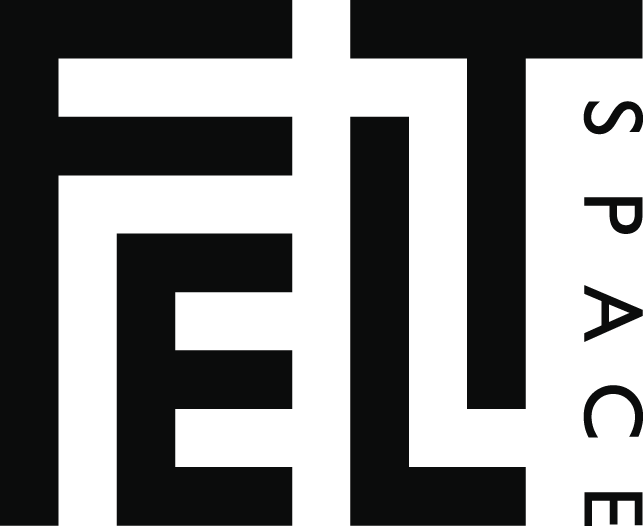PEENEEYT MEERREENG (BEFORE, NOW, TOMORROW) / LEFT BEHIND - OCTOBER 2017
Artists: Hayley Millar-Baker / Jane Skeer
Author - Vanessa Cianfaglione
How can we explore the complexities of our relationship with family? As people, our identity is a jumble of stories, names and places that we carpetbag with us and share with others so our fundamental selves can be known and discovered. The current exhibitions at FELTspace allow two artists - Hayley Millar-Baker and Jane Skeer - to share an intimate insight into their grapple with the destruction and reconstruction of family when those deep connections to identity and belonging are lost.
Hayley Millar-Baker has five images on display as part of a larger series that all bear the name “even if the race is fated to disappear.”[1] This pernicious quote is pulled from the Victorian Royal Commission On Aborigines published in 1877, and provides a point of interrogation regarding the resilience of family and her Gunditjmara heritage and Country in a post-colonial landscape. Millar-Baker explains that each image is created by piecing together previously taken photographs. Each greyscale landscape is a new creation, pieced together by composite layers. The dramatic, monochromatic images highlight the push and pull of the natural and unnatural forces that shape our modern landscapes. In this series, the artist is working through the way her identity, family and connection to Country have been indelibly shaped by erosion – first by the volcanic forces leaving valleys and ranges in their wake, and then by religious and cultural imperialism. The stone walls and rock faces are now the ruins of the disused Missions. Millar-Baker has created landscapes to show the past, present and future, compressed and overlaid into one picture plane. The images themselves are composed to act as an archaeological cross-section that charts the slow process of regeneration. They are in essence, tapestries that visually and historically tell the story of family and cultural identity away from Country. This is at its most striking in Even if the race is fated to disappear 7.[2] The centre of the image is satin stitched together with the cragged bark of trees. This natural wall grows out of inhospitable bedrock that forces the old mission brick walls and buildings up and away from earth and Country. The image draws the eyes up the stone columns the buildings hold up and creates sight lines that recall crumbling European cathedrals.
The other exhibition is Jane Skeer’s moving image work, Left Behind.[3] After losing her mother, the artist had decided to use some of her mother’s collection of silk scarves to make a wall piece. Skeer describes her mother as a fashion forward woman who used her scarves to complete and perfect each outfit. Trying to use the scarves to honour her mother’s memory proved to be a difficult challenge and ended with Skeer pulling all the scarves down in frustration and hugging them to her. In this moment of emotional turmoil, embraced in turn by her mother’s perfume that lingered in the fabric of the scarves, Skeer turned her smartphone camera on herself and captured a spontaneous burst of grief and creativity. The slowed-down footage places the focus solely on the scarves themselves. The artist’s hands are barely visible amidst the rainbow of colours, primarily supporting the fabric so it can be appreciated in close detail. In contrast to the deep greys and blacks of Millar-Baker’s work, sections of the 18 minute video allow for the jewel tones of the fabrics to take on an almost magical quality. With Skeer’s choice to slow down the video she captured, and the almost unseen presence of her hands, the scarves seem to take on a life of their own. The video is presented with a two other objects in the cosy alcove of the back gallery. The first of these is the scarves, sorted from light to dark, stitched together then wound into a tight ball, now sitting on a low pedestal beside the video projection. With these is a chair belonging to Skeer’s grandmother, making the work a votive offering to three generations of women.
Motherhood is at the heart of defining family and each artist explores the impact of losing the comfort and understanding that comes from a strong maternal bond. For Millar-Baker, “Land is mother, we live with the land – not off the land.”[4] The large-scale image landscapes she has created are a way to rebuild the connection to Country while forced to live away from it, combatting the way sacred sites have been diminished and disappeared altogether by continuing colonial occupation. Though unconnected at first glance, both bodies of work explore strength and healing, whether by forging new connections to Country or by memorialising a loved one. Both exhibitions convey a sense of grief, but also regeneration and hope. The artists both underscore how their respective practices act as a conduit for the complex powers of connection, loss, hope and strength.
[1] Report of the Commissioners appointed to inquire into the present conditions of the Aborigines of this colony, and to advise as to the best means of caring for, and dealing with them in the future together with Minutes of Evidence and Appendices, (Melbourne, John Ferres Government Printer, 1877), 15.
[2] 2017, inkjet on cotton rag, 150 x 80cm, courtesy of the artist.
[3] 2017, video and household objects, courtesy of the artist.
[4] Hayley Millar-Baker, “Toongkatyeeyt”, Haley Millar-Baker, accessed 9 October 2017, <http://www.hayleymillar.net/toongkateeyt.html>
